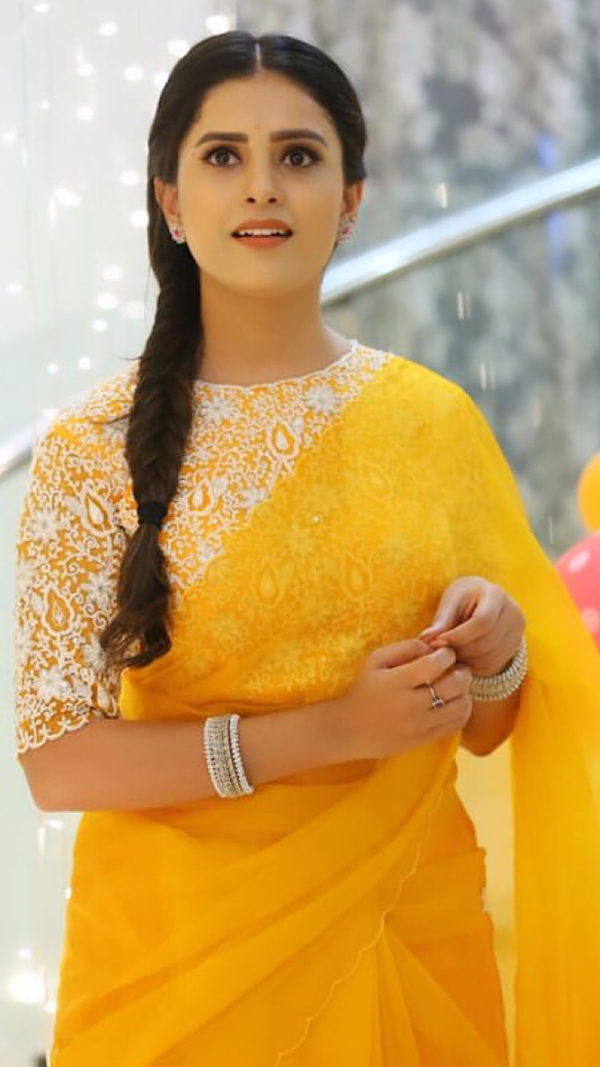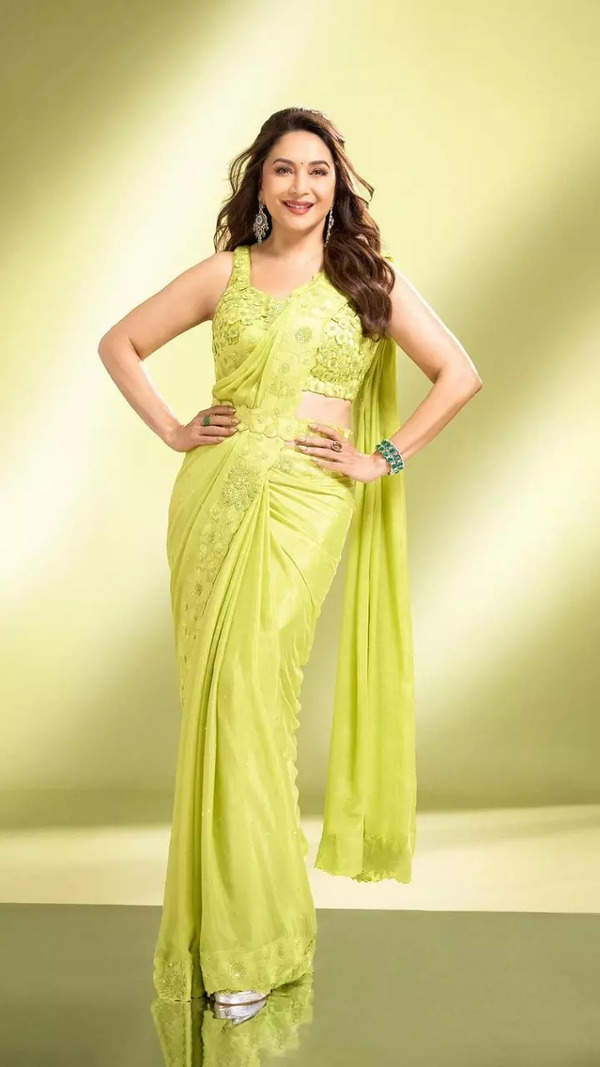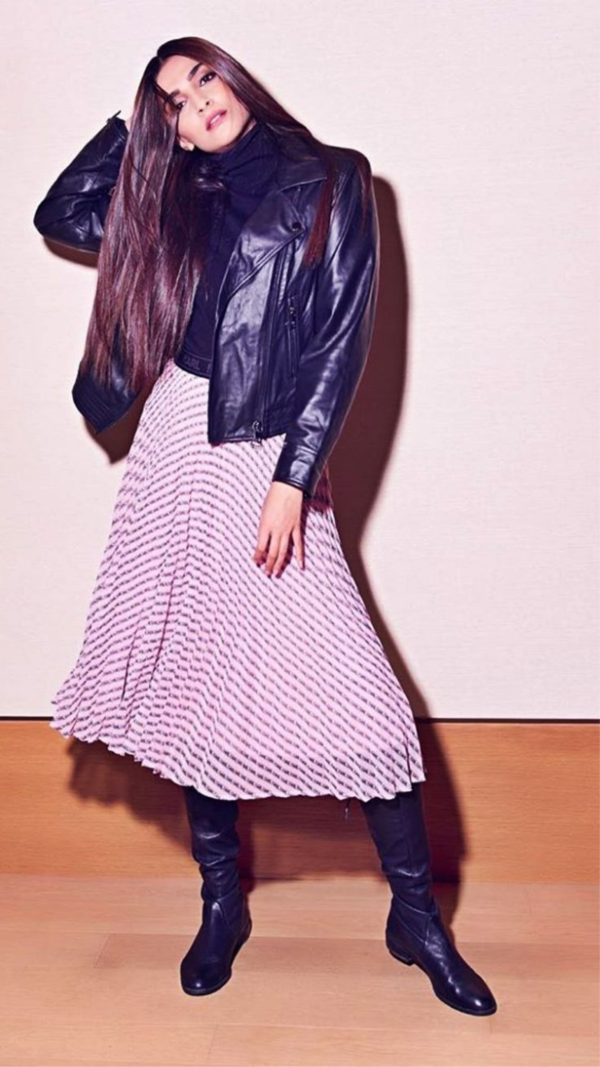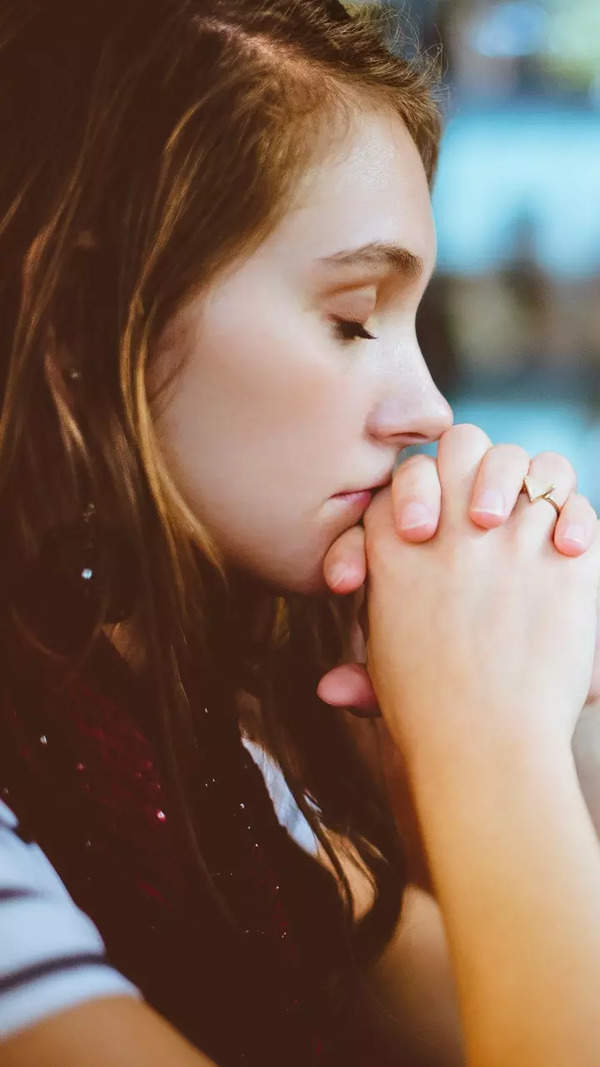Trending
This story is from May 19, 2016
15 years of Geisha Designs in 15 questions
15 years ago Shalini Jaikaria abandoned a career in medicine to partner with best friend Paras Bairoliya to make a living out of creating traditional Indian silhouettes.
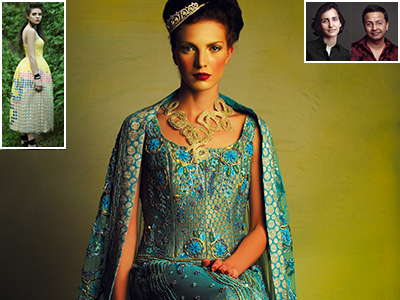
15 years ago Shalini Jaikaria abandoned a career in medicine to partner with best friend Paras Bairoliya to make a living out of creating traditional Indian silhouettes with the focus on fine craftsmanship, utility and refinement.
Thus was born Geisha Designs - a label that has been personifying beauty with elegance, feminity and romance since their launch in 2011. Its USP: craftsmanship, is a big seller for the Indian label, whose biggest markets include US and Middle-East."Buyers love hand embroidery as it adds a touch of personal involvement in each piece and it makes the garment unique from everything else available in the market," reveals Shalini, the designer.

This year, Geisha Designs is celebrating 15 years of creativity, achievements and fashion. "15 years to us is a landmark of our achievements," tells Shalini. She recounts, "15 years ago, I started off as an enthusiastic youth full of energy and zeal to prove myself, rebelling from home, abandoning a career in medicine, I partnered with my best friend Paras to make a living in garments. It was Geisha Designs that became my medium to achieve it."
As Shalini gets into a celebratory mood, we asked her 15 questions to look back at 15 years of Geisha Designs:
Congratulations! How do you look back at 15 years of Geisha Designs. What is the legacy you've left?
Our goal has been to bring joy into people lives through clothes and accessories. We started with a team of two and over the 15 years, it has grown to 150+ skilled craftsmen which is our asset and strength. We now stock our products in over 100 specialized high-end boutiques across the globe (USA, UK, Ireland, Italy, Spain, Middle east, South Africa, Nigeria, Egypt, Hong Kong, Indonesia, Japan & India). We have a state of the art factory in Noida and showcase regularly at Who's Next, Paris, Paris Fashion Week and India Fashion Week. It’s been a satisfying 15 years and yet miles to go...
All throughout 15 years, we have experimented and played with different textures, designs and styles. Every year, with every collection we try our best to constantly create new benchmarks and very seldom repeat a silhouette, embroidery or theme. While we started with a strong belief in pure fabrics, cottons, silks, linens, bamboo and hand craft, the last few years saw a change; we used a lot of synthetic fibres and invested a lot more in technology.
We have done embroideries in Kashmir and mixed it with Badla work or chikankari from Lucknow and the same has been done on a base woven in Benaras or in Kutch. There have been times when we have worked with Daboo printers in Sanganer and block printers of Jaipur and yet at other times, they have had Sewa do their embroideries in Ahmedabad or hand spun and woven our fabrics in Fulia, near Kolkata or even Ikat from Orissa. Some great needlepoint work was done by convents in Kanyakumari for collections inspired from the Victorian era.
How does one go from MBBS to Fashion Designing?
I was born in a small town - Chandigarh. My parents were in the Army and hence, we relocated to new cities every two years. I have traveled the length and breadth of India as a child. Fashion and hence, art was a getaway from more structured careers in the offing. For me, there was a great desire for self-expression and this field (unlike my Medical education) offered myriad options to add colour to the otherwise black and white monotony of daily life. On completion of Medicine (MBBS) from KEM Hospital, Mumbai, I pursued Fashion Education despite resistance from my family and I am glad I made that choice. I moved to New Delhi to enroll at National Institute of Fashion Technology(NIFT) in 1995. On completion of the fashion education, I did a brief summer course at FIT, New York.
In the year 2000, I started my own atelier in partnership with my best friend. Rest was all easy. Over the last 15 years, I have laboured with craftsmen to reinvent romance such that it keeps us motivated and loved. The team, which started as just two members, today proudly has more than 150 skilled craftsmen. I loved the freedom of expression, diverse cultures and opportunities this city offered and hence settled here. Delhi has been home, family, work and life.
Whose idea was Geisha Designs. Who approached whom and how did it all start?
We (Shalini and Paras) met back in college (NIFT, New Delhi) where we pursued 3 year diploma in Fashion Design. Both of us came from the science stream, so we often deliberated on the nuances of technicalities of patterns, drapes and fabrics and derived an excitement in conquering challenging patterns and hence, a sound design where darts and seams played with each other also helped us achieve a good fit. There was a healthy competition between us and a great camaraderie. We completed college in 1998 and met again in 2001, when we deliberated on starting a label together and utilizing our common strengths in coming up with something unique.
We were initially oriental in our design sensibility and also shied away from lending our personal names to the label and hence, chose the name "Geisha" (Japanese term for an artistic person). While "Design" was added for registration and trade marking as some connotations were also attached to the term "Geisha". We also happened to be both reading "Memoirs of a Geisha by Sir Arthur Golden" at the time of the initial days of the label so this also was an influence. We were inspired by the fact that a Geisha is usually a small town girl, who strives to achieve a unique position by her skills in art, music, and dance performance. Her choice of apparel, accessories and the way she applied her make-up made her stand out from the others in the same trade. In a somewhat similar situation, we ere both from small towns and were using our education and experience to create a unique product, which would mark its own identity over time.

At a time when designer duos and couples split, how do you both stay a team?
Paras: We co-ordinate among ourselves and segregate our work. Shalini spends most of her time in design, while I work mostly on communication (internal as well as external) and finance. We travel alternately for our international trade events sometimes to assess market acceptability of the new collection and other times for networking and sourcing.
We have a lot of trust in each other, although we often argue over little things, decisions. But our inclination as always has been in the best interest of the brand, which is bigger now than either/both of us. We choose to be workers like the rest of the 150 odd team of ours and put in as much time and effort as we did 15 years ago.
What do you do to de-stress yourself from all the creativity and work?
Shalini: I occasionally paint and also do wild life photography. Meditation and exploration on spirituality has helped me keep my calm and focus. I also do deep sea diving on holidays in Andaman and Lakshwadeep as the colours and shapes of the underwater world mesmerize me. Each visit, be it to Ladakh, Bhuj, Maihar, Rome or Prague have become a source of inspiration and has reflected in some way or another in subsequent collections.
We also have a passion for books (art, architecture, photography, botanicals, textiles , biographys, etc…) and have over time developed a strong library at our studio. Very often, I indulge in them and they have helped me focus as well as de-stress.
Paras: I bicycle long distances early mornings on a regular basis and occasionally also swim with my children. Some good music, a cup of coffee, a newspaper and once in a while a game of Sudoku or unscramble (and similar mind games) helps me unwind. As a family, we look at two annual holidays which help a lot in refreshing and thankfully due to a partnership at work we are able to separately get away from work once in a while when it gets a bit overwhelming and at the same time spend some quality time with our respective families.

Looking back at all of your collections, which one in particular was a pain to work on? And which was the most fun?
In 2009, we added prints into our collection. We named it 'Impressionist' where initial prints were taken from Shalini’s personal collection of paintings. It was a fresh start with a new look. With changing times and a desire to reach larger number of people globally we introduced a resort line. It was challenging yet exciting to work with prints, laser and machine embroidery for the very first time. The prime motive was to create a budgeted yet chic look.
By 2013, Shalini had entered the most romantic phase of her life. Things changed and so did the clothes. Delicate laces, tulles with elegance and opulence, gave Geisha a new look. The SS’13 collection called ‘Medusa’ was the most fun to design. It was a collection that always flies off the rack and helped us get accolades globally.
Which technology has been the most interesting of all to work with?
While craft and culture have always mesmerized me, there is a constant desire to adopt new technologies. So we recently invested in laser cutting and computerized embroidery machines. The desire is to contemporarize craft in unique ways.
We now use a lot of man-made fibres and also invest in a lot of technology. We also do a lot of digital printing in Surat and Sonepat and work leads to frequent trips to China. We realize that with time we have to accept technology for consistency and quality while the outcome can still be one with awe.
Technology has become an essential part of our design process. The global recession demanded for affordable clothes and saw a new focus towards lazer and computers, which has indeed been a liberating experience. It breaks from the confines of traditional embroidery. In 2014, we launched a collection “Coral Gardens’ and in 2015 “Dreamscapes/ fall angel” which saw the advent of technology in our label.

Who is a Geisha girl?
A Geisha girl loves to be loved! She is a beautiful person inside out. She exuberates femininity, soft romance and sensuality. She is well-read, traveled and likes to mix and match pieces from across the globe. She likes classics, which add to her personality rather than become conversational.
Your collections are always romantic and princessy. What do you have for a city girl in your collections?
Shalini: We've always loved experimenting and playing around a variety of silhouettes, textures and themes. There is something for everyone. For instance, in 2004 we presented “My fair lady”. In this collection we tried to explore feminine and unisex clothing for women.
The second half was designed by Paras with Sanganer prints. We made fun quilted jackets and pant sets with details inspired from folk costumes around the world. It was fun connecting with the yin and the yan to complete ourselves.

You have worked with a lot of fabric and artwork. What has been the most challenging one to work with?
2010. The black rose. The year the twin towers crashed, and the world economy came tumbling down. The year we were making a foray into the world market and understood the word “recession”. It was also a season we made evening wear out of wool only to realize there is no winter evening wear even in the most cold countries…evening wear is worn indoors. I remember this collection caused a lot of tears, but it helped me differentiate between work and self. Never again has sales ever caused me heartbreaks. It was a beautiful collection in greys and blacks with trees without leaves, The models where bandaged and carrying black roses signifying the love lost!

Do you believe and support sustainable fashion?
Yes, we certainly believe and support sustainable fashion. Handicraft handed down generations influence most of our pieces. Indian Royal families have led a very flamboyant lifestyle and their costumes are very well documented and often make a source of inspiration for our collections.
Also we feel, there needs to be a sense of purpose into what we are doing. Satisfaction levels would be upped if we also take up social responsibility- we need to care for our nature/environment. Recycling/upcycling would be useful and if we could care for the lesser fortunate humans/animals in our own unique ways or lend support to organizations which do so, it would lead to a better society and also bring joy into what we are doing.
In current times, with the advent of technology and price wars between brands (barring couture), manufacture of hand crafted products have reduced and the artisans are not supported well. It will be great if the designers continue to work with hand weave/embroidery/block printing etc. to help continuity of our rich tradition by generating demand hence employment..
What is your favourite flower to play print with?
Shalini: We love our present Spring Collection the most. It's an amalgamation of flowers, art, mystique, life and nature’s pride; which have been a constant source of inspiration for our collections. In particular, I love the sunflower volume Taffeta skirt which is an abstract painted version of a gigantic sunflower. While no motif stand out in particular, the pop of colours makes me very happy and romantic.

If you could go back in time, which era would you like to dress. Why?
The 20’s, (the Great Gatsby period) has truly been a great era, which has influenced many of our collections. Drop waist dresses, sleeveless, occasionally shapeless, long or short slip gowns accented with beading, sequins, fringe, and some feathers. Rich jewel tones and soft pastels made the simplest of gowns look expensive.
Your collections have traveled north, south, west and central of India. But haven't visited east India yet. Do you see Geisha Designs experimenting with a north-eastern theme like Anupama Dayal did this season?
North-east India has distinctive tribes like Garo, Khasi, Mizo, Naga and Bodo that possess rich and unique characteristics. We do hope to work on a collection inspired from their crafts in the near future.

What was the first sane advice you ever received from the fashion industry? And what's the best advice you can give to a designer-in-making?
In our formative years, we were very introverted and would seldom speak about our product/design/ideology. However, over time we realized that communication is the key to any successful brand. Also, it's taken us a long time to accept that the only thing constant in our work and life is "change". We have adapted to new circumstances and are always ready to accept new challenges and have come on stronger with each fall.
Each of us is born to a unique environment and our upbringing, education, experiences enrich us in our own ways. Our designs reflect our individuality. Let's be ourselves while being appreciative of others around us. Share your ideas and experiences with your colleagues as a life time is too little to reinvent the wheel. Let's all learn from each other's mistakes and grow together. There's room for all of us to grow concurrently while maintaining our individuality and uniqueness.
Designer's responsibility towards the society?
There needs to be a sense of purpose into what we are doing. Satisfaction levels would be upped if we also take up social responsibility- we need to care for our nature and environment. Recycling and upcycling would be useful and if we could care for the lesser fortunate humans/animals in our own unique ways or lend support to organizations which do so, it would lead to a better society and also bring joy into what we are doing.
In current times, with the advent of technology and price wars between brands (barring couture), manufacture of hand crafted products have reduced and the artisans are not supported well. It will be great if the designers continue to work with hand weave/embroidery/block printing etc. to help continuity of our rich tradition by generating demand hence employment.

Nimrat Kaur, Paris Hilton and Sonam Kapoor in Geisha Designs
(Image source: Instagram, facebook, Geisha Designs)
Thus was born Geisha Designs - a label that has been personifying beauty with elegance, feminity and romance since their launch in 2011. Its USP: craftsmanship, is a big seller for the Indian label, whose biggest markets include US and Middle-East."Buyers love hand embroidery as it adds a touch of personal involvement in each piece and it makes the garment unique from everything else available in the market," reveals Shalini, the designer.

This year, Geisha Designs is celebrating 15 years of creativity, achievements and fashion. "15 years to us is a landmark of our achievements," tells Shalini. She recounts, "15 years ago, I started off as an enthusiastic youth full of energy and zeal to prove myself, rebelling from home, abandoning a career in medicine, I partnered with my best friend Paras to make a living in garments. It was Geisha Designs that became my medium to achieve it."
Every achievement has a journey; a journey of mistakes, lessons, trials and joys. Geisha Designs is no exception, Shalini reveals the initial joyful years of having a small studio and making wearable art. "Our first ever collection was the rose, since roses have been an ultimate declaration of love; it became an inspiration for us." But it was their second year, which the designer tells us "was the turning point." "The collection became an instant hit at the fashion week and we've grown ever since."
As Shalini gets into a celebratory mood, we asked her 15 questions to look back at 15 years of Geisha Designs:
Congratulations! How do you look back at 15 years of Geisha Designs. What is the legacy you've left?
Our goal has been to bring joy into people lives through clothes and accessories. We started with a team of two and over the 15 years, it has grown to 150+ skilled craftsmen which is our asset and strength. We now stock our products in over 100 specialized high-end boutiques across the globe (USA, UK, Ireland, Italy, Spain, Middle east, South Africa, Nigeria, Egypt, Hong Kong, Indonesia, Japan & India). We have a state of the art factory in Noida and showcase regularly at Who's Next, Paris, Paris Fashion Week and India Fashion Week. It’s been a satisfying 15 years and yet miles to go...
All throughout 15 years, we have experimented and played with different textures, designs and styles. Every year, with every collection we try our best to constantly create new benchmarks and very seldom repeat a silhouette, embroidery or theme. While we started with a strong belief in pure fabrics, cottons, silks, linens, bamboo and hand craft, the last few years saw a change; we used a lot of synthetic fibres and invested a lot more in technology.
We have done embroideries in Kashmir and mixed it with Badla work or chikankari from Lucknow and the same has been done on a base woven in Benaras or in Kutch. There have been times when we have worked with Daboo printers in Sanganer and block printers of Jaipur and yet at other times, they have had Sewa do their embroideries in Ahmedabad or hand spun and woven our fabrics in Fulia, near Kolkata or even Ikat from Orissa. Some great needlepoint work was done by convents in Kanyakumari for collections inspired from the Victorian era.
How does one go from MBBS to Fashion Designing?
I was born in a small town - Chandigarh. My parents were in the Army and hence, we relocated to new cities every two years. I have traveled the length and breadth of India as a child. Fashion and hence, art was a getaway from more structured careers in the offing. For me, there was a great desire for self-expression and this field (unlike my Medical education) offered myriad options to add colour to the otherwise black and white monotony of daily life. On completion of Medicine (MBBS) from KEM Hospital, Mumbai, I pursued Fashion Education despite resistance from my family and I am glad I made that choice. I moved to New Delhi to enroll at National Institute of Fashion Technology(NIFT) in 1995. On completion of the fashion education, I did a brief summer course at FIT, New York.
In the year 2000, I started my own atelier in partnership with my best friend. Rest was all easy. Over the last 15 years, I have laboured with craftsmen to reinvent romance such that it keeps us motivated and loved. The team, which started as just two members, today proudly has more than 150 skilled craftsmen. I loved the freedom of expression, diverse cultures and opportunities this city offered and hence settled here. Delhi has been home, family, work and life.
Whose idea was Geisha Designs. Who approached whom and how did it all start?
We (Shalini and Paras) met back in college (NIFT, New Delhi) where we pursued 3 year diploma in Fashion Design. Both of us came from the science stream, so we often deliberated on the nuances of technicalities of patterns, drapes and fabrics and derived an excitement in conquering challenging patterns and hence, a sound design where darts and seams played with each other also helped us achieve a good fit. There was a healthy competition between us and a great camaraderie. We completed college in 1998 and met again in 2001, when we deliberated on starting a label together and utilizing our common strengths in coming up with something unique.
We were initially oriental in our design sensibility and also shied away from lending our personal names to the label and hence, chose the name "Geisha" (Japanese term for an artistic person). While "Design" was added for registration and trade marking as some connotations were also attached to the term "Geisha". We also happened to be both reading "Memoirs of a Geisha by Sir Arthur Golden" at the time of the initial days of the label so this also was an influence. We were inspired by the fact that a Geisha is usually a small town girl, who strives to achieve a unique position by her skills in art, music, and dance performance. Her choice of apparel, accessories and the way she applied her make-up made her stand out from the others in the same trade. In a somewhat similar situation, we ere both from small towns and were using our education and experience to create a unique product, which would mark its own identity over time.

At a time when designer duos and couples split, how do you both stay a team?
Paras: We co-ordinate among ourselves and segregate our work. Shalini spends most of her time in design, while I work mostly on communication (internal as well as external) and finance. We travel alternately for our international trade events sometimes to assess market acceptability of the new collection and other times for networking and sourcing.
We have a lot of trust in each other, although we often argue over little things, decisions. But our inclination as always has been in the best interest of the brand, which is bigger now than either/both of us. We choose to be workers like the rest of the 150 odd team of ours and put in as much time and effort as we did 15 years ago.
What do you do to de-stress yourself from all the creativity and work?
Shalini: I occasionally paint and also do wild life photography. Meditation and exploration on spirituality has helped me keep my calm and focus. I also do deep sea diving on holidays in Andaman and Lakshwadeep as the colours and shapes of the underwater world mesmerize me. Each visit, be it to Ladakh, Bhuj, Maihar, Rome or Prague have become a source of inspiration and has reflected in some way or another in subsequent collections.
We also have a passion for books (art, architecture, photography, botanicals, textiles , biographys, etc…) and have over time developed a strong library at our studio. Very often, I indulge in them and they have helped me focus as well as de-stress.
Paras: I bicycle long distances early mornings on a regular basis and occasionally also swim with my children. Some good music, a cup of coffee, a newspaper and once in a while a game of Sudoku or unscramble (and similar mind games) helps me unwind. As a family, we look at two annual holidays which help a lot in refreshing and thankfully due to a partnership at work we are able to separately get away from work once in a while when it gets a bit overwhelming and at the same time spend some quality time with our respective families.

Looking back at all of your collections, which one in particular was a pain to work on? And which was the most fun?
In 2009, we added prints into our collection. We named it 'Impressionist' where initial prints were taken from Shalini’s personal collection of paintings. It was a fresh start with a new look. With changing times and a desire to reach larger number of people globally we introduced a resort line. It was challenging yet exciting to work with prints, laser and machine embroidery for the very first time. The prime motive was to create a budgeted yet chic look.
By 2013, Shalini had entered the most romantic phase of her life. Things changed and so did the clothes. Delicate laces, tulles with elegance and opulence, gave Geisha a new look. The SS’13 collection called ‘Medusa’ was the most fun to design. It was a collection that always flies off the rack and helped us get accolades globally.
Which technology has been the most interesting of all to work with?
While craft and culture have always mesmerized me, there is a constant desire to adopt new technologies. So we recently invested in laser cutting and computerized embroidery machines. The desire is to contemporarize craft in unique ways.
We now use a lot of man-made fibres and also invest in a lot of technology. We also do a lot of digital printing in Surat and Sonepat and work leads to frequent trips to China. We realize that with time we have to accept technology for consistency and quality while the outcome can still be one with awe.
Technology has become an essential part of our design process. The global recession demanded for affordable clothes and saw a new focus towards lazer and computers, which has indeed been a liberating experience. It breaks from the confines of traditional embroidery. In 2014, we launched a collection “Coral Gardens’ and in 2015 “Dreamscapes/ fall angel” which saw the advent of technology in our label.

Who is a Geisha girl?
A Geisha girl loves to be loved! She is a beautiful person inside out. She exuberates femininity, soft romance and sensuality. She is well-read, traveled and likes to mix and match pieces from across the globe. She likes classics, which add to her personality rather than become conversational.
Your collections are always romantic and princessy. What do you have for a city girl in your collections?
Shalini: We've always loved experimenting and playing around a variety of silhouettes, textures and themes. There is something for everyone. For instance, in 2004 we presented “My fair lady”. In this collection we tried to explore feminine and unisex clothing for women.
The second half was designed by Paras with Sanganer prints. We made fun quilted jackets and pant sets with details inspired from folk costumes around the world. It was fun connecting with the yin and the yan to complete ourselves.

You have worked with a lot of fabric and artwork. What has been the most challenging one to work with?
2010. The black rose. The year the twin towers crashed, and the world economy came tumbling down. The year we were making a foray into the world market and understood the word “recession”. It was also a season we made evening wear out of wool only to realize there is no winter evening wear even in the most cold countries…evening wear is worn indoors. I remember this collection caused a lot of tears, but it helped me differentiate between work and self. Never again has sales ever caused me heartbreaks. It was a beautiful collection in greys and blacks with trees without leaves, The models where bandaged and carrying black roses signifying the love lost!
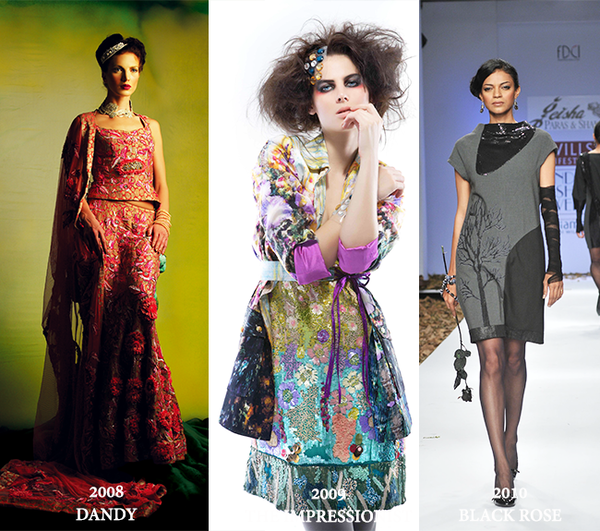
Do you believe and support sustainable fashion?
Yes, we certainly believe and support sustainable fashion. Handicraft handed down generations influence most of our pieces. Indian Royal families have led a very flamboyant lifestyle and their costumes are very well documented and often make a source of inspiration for our collections.
Also we feel, there needs to be a sense of purpose into what we are doing. Satisfaction levels would be upped if we also take up social responsibility- we need to care for our nature/environment. Recycling/upcycling would be useful and if we could care for the lesser fortunate humans/animals in our own unique ways or lend support to organizations which do so, it would lead to a better society and also bring joy into what we are doing.
In current times, with the advent of technology and price wars between brands (barring couture), manufacture of hand crafted products have reduced and the artisans are not supported well. It will be great if the designers continue to work with hand weave/embroidery/block printing etc. to help continuity of our rich tradition by generating demand hence employment..
What is your favourite flower to play print with?
Shalini: We love our present Spring Collection the most. It's an amalgamation of flowers, art, mystique, life and nature’s pride; which have been a constant source of inspiration for our collections. In particular, I love the sunflower volume Taffeta skirt which is an abstract painted version of a gigantic sunflower. While no motif stand out in particular, the pop of colours makes me very happy and romantic.

If you could go back in time, which era would you like to dress. Why?
The 20’s, (the Great Gatsby period) has truly been a great era, which has influenced many of our collections. Drop waist dresses, sleeveless, occasionally shapeless, long or short slip gowns accented with beading, sequins, fringe, and some feathers. Rich jewel tones and soft pastels made the simplest of gowns look expensive.
Your collections have traveled north, south, west and central of India. But haven't visited east India yet. Do you see Geisha Designs experimenting with a north-eastern theme like Anupama Dayal did this season?
North-east India has distinctive tribes like Garo, Khasi, Mizo, Naga and Bodo that possess rich and unique characteristics. We do hope to work on a collection inspired from their crafts in the near future.
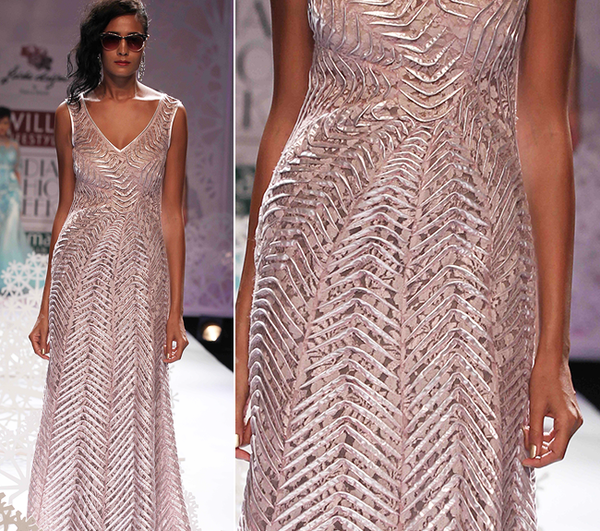
What was the first sane advice you ever received from the fashion industry? And what's the best advice you can give to a designer-in-making?
In our formative years, we were very introverted and would seldom speak about our product/design/ideology. However, over time we realized that communication is the key to any successful brand. Also, it's taken us a long time to accept that the only thing constant in our work and life is "change". We have adapted to new circumstances and are always ready to accept new challenges and have come on stronger with each fall.
Each of us is born to a unique environment and our upbringing, education, experiences enrich us in our own ways. Our designs reflect our individuality. Let's be ourselves while being appreciative of others around us. Share your ideas and experiences with your colleagues as a life time is too little to reinvent the wheel. Let's all learn from each other's mistakes and grow together. There's room for all of us to grow concurrently while maintaining our individuality and uniqueness.
Designer's responsibility towards the society?
There needs to be a sense of purpose into what we are doing. Satisfaction levels would be upped if we also take up social responsibility- we need to care for our nature and environment. Recycling and upcycling would be useful and if we could care for the lesser fortunate humans/animals in our own unique ways or lend support to organizations which do so, it would lead to a better society and also bring joy into what we are doing.
In current times, with the advent of technology and price wars between brands (barring couture), manufacture of hand crafted products have reduced and the artisans are not supported well. It will be great if the designers continue to work with hand weave/embroidery/block printing etc. to help continuity of our rich tradition by generating demand hence employment.
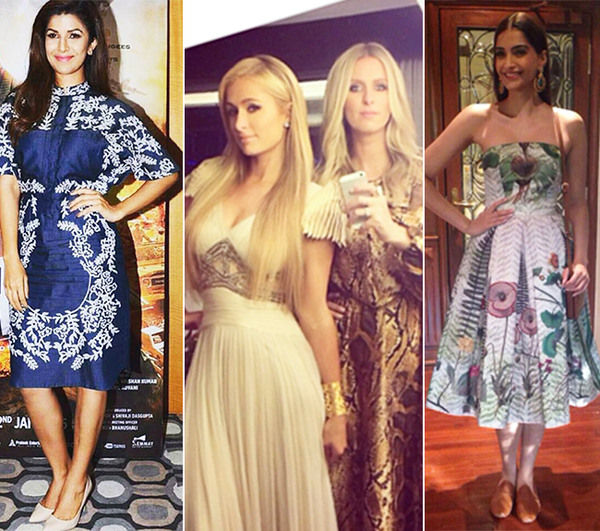
Nimrat Kaur, Paris Hilton and Sonam Kapoor in Geisha Designs
(Image source: Instagram, facebook, Geisha Designs)
End of Article
FOLLOW US ON SOCIAL MEDIA


